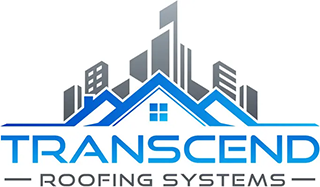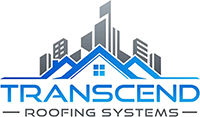How a Chimney Leak Can Cause Water Damage to Your Roof
Leaky Chimney Water Damage
A leaky chimney might not seem like a significant issue at first glance, but its impact on the health of your roof can be substantial. In this blog post, we’ll delve into the importance of addressing chimney leaks promptly to prevent damage and ensure the longevity of your home’s structure.
Understanding Chimney Leaks
Chimney leaks can stem from various sources, including damaged flashing, cracked masonry, or faulty seals. Recognizing the signs and symptoms of a leaky chimney is crucial for early detection and mitigation before significant damage occurs.
Common Causes of Chimney Leaks:
- Damaged Flashing: The flashing around the base of the chimney can degrade over time due to exposure to weather elements, leading to water penetration.
- Cracked Masonry: Cracks in the chimney’s masonry can develop from age, weathering, or seismic activity, allowing water to seep through.
- Faulty Seals: Poorly sealed joints or gaps between chimney components can provide pathways for water infiltration.
Signs and Symptoms of Chimney Leaks:
- Water Stains on Interior Ceilings or Walls: Discoloration or water spots indicate moisture intrusion from a leaky chimney.
- Dampness or Musty Odors in the Attic: Moisture buildup in the attic can result from chimney leaks, leading to musty smells and potential mold growth.
- Deterioration of Chimney Components: Visible damage such as crumbling mortar or rusted flashing may indicate water .
How a Leaky Chimney can Cause Direct Damage to Your Roof
Water penetration can lead to the rotting of decking and rafters, compromising the structural integrity of your roof. Additionally, constant exposure to moisture can cause deterioration of shingles or roofing tiles, accelerating the need for repairs or replacements.
Effects of Water Penetration on Roofing Materials:
- Rotting of Roof Decking: Moisture seeping into the roof decking can lead to decay and weakening of the wood structure.
- Deterioration of Shingles or Tiles: Constant exposure to water can cause asphalt shingles to curl, crack, or lose granules, while roofing tiles may become dislodged or cracked.
- Potential for Mold and Mildew Growth: Moisture trapped within materials provides an ideal environment for mold and mildew to thrive, posing health risks and further compromising the integrity.
Structural Damage and Compromised Integrity
Prolonged exposure from water saturation weakens structures, posing the risk of collapse or sagging in severe cases. This compromises the overall stability and safety of the roof system, necessitating immediate attention and repairs.
Effects of Structural Damage from Chimney Leaks:
- Weakening of Roof Supports: Moisture-induced rot or deterioration can compromise the load-bearing capacity of rafters and trusses.
- Risk of Roof Collapse: Severe structural damage from prolonged chimney leaks may result in roof collapse, posing significant safety hazards to occupants and property.
- Impact on Home Value: Structural damage from chimney leaks can diminish the value of the home and complicate real estate transactions.
Secondary Issues Caused by Chimney Leaks
Beyond direct damage to roofing materials, water in the chimney can result in damage to attic insulation and interior ceilings. Additionally, reduced insulation efficiency can lead to increased energy costs, while water infiltration into wiring or fixtures poses the risk of electrical hazards.
Secondary Effects of Water Leaks:
- Water Damage to Attic Insulation: Saturated insulation loses its effectiveness, resulting in reduced energy efficiency and potential mold growth.
- Increased Energy Costs: Poor insulation and moisture infiltration can lead to higher heating and cooling expenses as the HVAC system works harder to maintain desired indoor temperatures.
- Risk of Electrical Hazards: Water infiltration into electrical wiring or fixtures presents a fire hazard and may necessitate costly repairs or replacements.
Prevention, Repair, and Maintenance Tips
Regular chimney inspections and maintenance are essential for identifying and addressing potential issues before they escalate. Proper installation and maintenance of chimney flashing and seals can help prevent water infiltration, while prompt repair of any signs of chimney damage or leakage is crucial for mitigating further damage.
Tips for Chimney Repair and Leak Prevention and Maintenance:
- Schedule Annual Chimney Inspections: Professional chimney inspections can identify potential leaks or damage early on, allowing for timely repairs.
- Maintain Flashing and Seals: Ensure that chimney flashing is securely installed and seals are intact to prevent water infiltration.
- Address Signs of Damage Promptly: If you notice signs of water in the chimney, such as water stains or deteriorating chimney components, seek repairs promptly to prevent further damage.
Professional Chimney Inspection
In cases of suspected chimney-related issues or damage, seeking a professional inspection is highly recommended. Companies like Chimney & Dryer Vent Services LLC offer thorough assessments, accurate diagnosis, and tailored solutions to address roof and chimney issues effectively.
Benefits of Professional Inspections for Preventing Chimney Leaks:
- Accurate Diagnosis: Trained professionals can accurately assess the extent of chimney leaks and related roof damage.
- Comprehensive Assessment: A professional roof inspection evaluates the entire system, including chimney components, to identify potential issues and provide comprehensive solutions.
- Tailored Solutions: Based on the inspection findings, professionals can recommend customized repairs or improvements to address specific chimney and roof concerns effectively.
Time For A Chimney Inspections?
The dangers of a leaky chimney for roof health cannot be overstated. Homeowners are encouraged to prioritize chimney maintenance, inspect regularly, promptly address leaks, and seek professional service when needed to ensure the safety and longevity of their homes. By taking proactive measures, you can safeguard your roof and protect your investment in your home for years to come.





